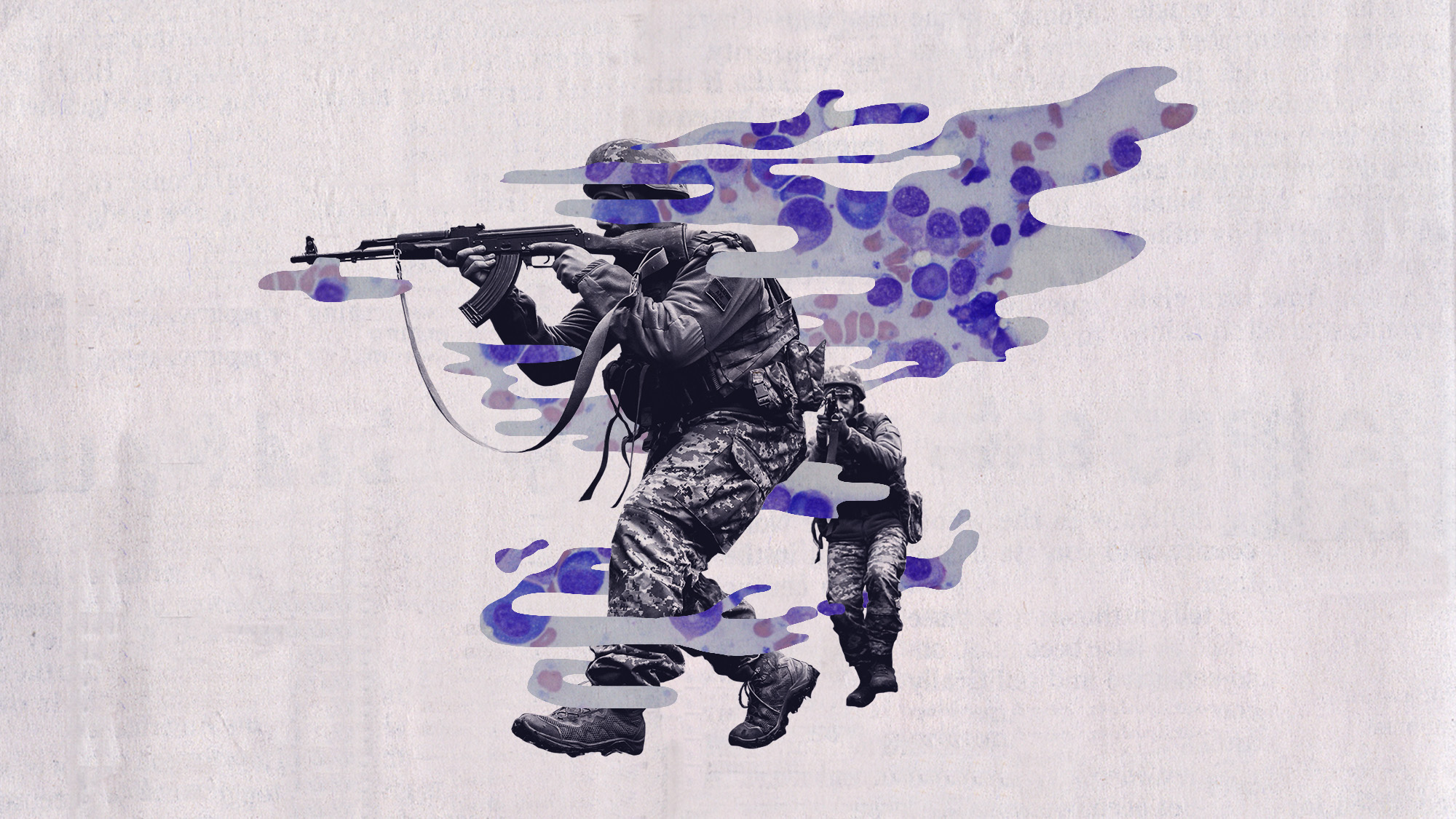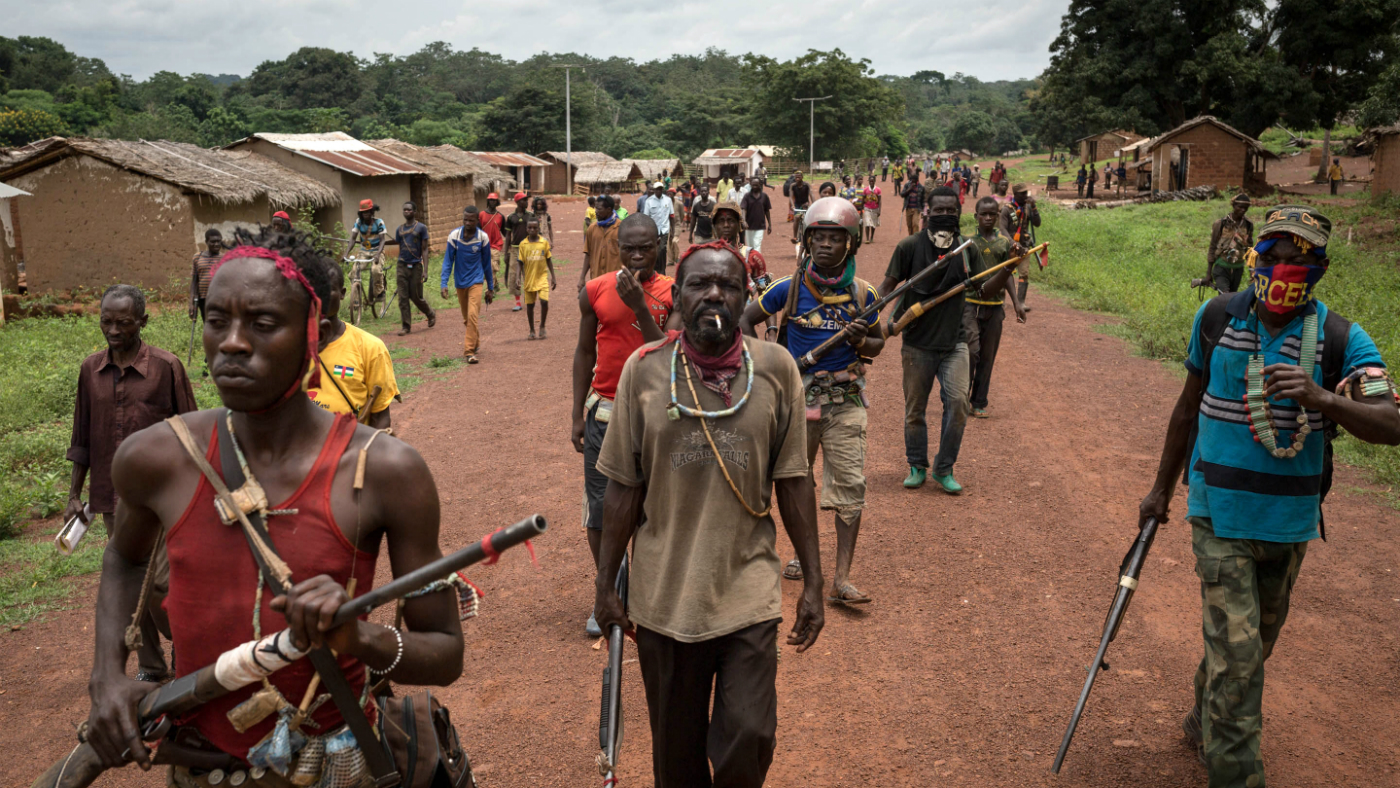Why Myanmar may be heading for a full-scale civil war
Civilian death toll rises as military battles anti-coup resistance groups

Myanmar’s security forces have killed at least 25 people in clashes with opponents of the military junta in a township in the central Sagaing region.
Local people in Depayin say the violence erupted after “four military trucks dropped soldiers at the village early on Friday”, Reuters reports.
The alleged raid is the latest in a series of clashes as civilians “increasingly take up arms against the generals who seized power in a coup five months ago”, says Al Jazeera.
The Week
Escape your echo chamber. Get the facts behind the news, plus analysis from multiple perspectives.

Sign up for The Week's Free Newsletters
From our morning news briefing to a weekly Good News Newsletter, get the best of The Week delivered directly to your inbox.
From our morning news briefing to a weekly Good News Newsletter, get the best of The Week delivered directly to your inbox.
Civilian fightback
According to residents in Depayin - around 200 miles north of the Southeast Asian nation’s capital, Naypyidaw - members of Myanmar’s military, known as the Tatmadaw, opened fire on the village “in a bid to flush out members of the local defence force”, Al Jazeera reports.
The villagers told the AFP news agency that members of the Depayin People’s Defence Force, a civilian militia formed to oppose the military coup, tried to retaliate but were pushed back by the greater firepower of the government troops.
“We heard the shooting of artillery 26 times,” a witness claimed. “They shot everyone who they saw on the road and in the village. They did not just have one target.”
A free daily email with the biggest news stories of the day – and the best features from TheWeek.com
A subsequent post on the defence force’s Facebook page said that 18 of its members had been killed, with a further 11 wounded.
However, “state-run media offered a different account account of the skirmish”, claiming the military was ambushed while patrolling the area, says Al Jazeera.
The state-owned Global New Light of Myanmar reported that troops fended off “armed terrorists” and later found “four mortars and six percussion lock firearms”. The newspaper did not give a death toll.
The UN estimates that widespread violence in Myanmar following February’s coup has driven more than 230,000 people from their homes. Almost 900 people have been killed by the security forces, according to latest figures from the Assistance Association for Political Prisoners, and more than 5,000 are currently in detention.
A report published last month by the International Crisis Group (ICG) warned that “the fast emergence” of resistance militias, “and their capacity to evolve from loosely coordinated groups of local people into more structured, better armed, and sustainably funded forces, likely marks a new phase of Myanmar’s decades-old civil war”.
“These lightly armed bands have inflicted significant casualties on the security forces, who have struck back with heavy weapons and bombardment of residential areas,” the report said.
Old enemies
The emergence of armed militia groups signals that the conflict in Myanmar is “entering a new and more complex phase”, writes The Diplomat’s Southeast Asia editor Sebastian Strangio.
“Civilian militias have met the most success in regions with existing militias or ethnic armed groups, or strong traditions of hunting, where basic weapons are easy to come by and many men have intimate knowledge of local terrain,” he continues.
The ICG report states that resistance efforts “have been most effective in places with existing militias or ethnic armed groups, or strong traditions of hunting - where many men have access to weapons and know the terrain intimately.
“Many of these areas have seen no active conflict in years or decades, meaning the Tatmadaw has little established military and intelligence capability there.”
And as Strangio reports, the ICG experts argued that given “the depth of grievance against the military junta, drawing on decades of neglect and racism, the new militias are unlikely to fade away”.
“They are thus set to add an additional layer to the complexity of Myanmar politics, complicating the junta’s attempts to consolidate its hold on power,” Strangio continues.
The final goal of many of the armed civilians is “more ambitious” than “merely reversing the coup”, says The Economist reports. These groups increasingly aim “to tame the army, which has ruled the country for most of the past 60 years, and bring it under civilian control”.
Myanmar has long been “beset by ethnically based insurgencies”, many stemming from British colonial-era cartography, the paper continues. But since the coup, “many of these ethnic militias” have “launched big offensives against the Tatmadaw” that has left the military “more embattled than it has been in a generation”.
Two of the most well-established ethnic militias, the Kachin Independence Army (KIA) and the Karen National Liberation Army (KNLA), have seized “army bases and police posts” in attacks in recent months. And “the Tatmadaw is even losing skirmishes against less experienced rebels”.
According to latest data from the Armed Conflict Location and Event Data Project (Acled), a total of at least 58 defence forces have formed across the country, of which 12 are active.
‘Bloody stalemate’
“Some may argue that using the tactics of assassinations and bombings to achieve political ends will put militias at risk of engaging in terrorism,” says The Irrawaddy, a news site founded in 1990 by Burmese exiles living in Thailand. “But to most citizens, resorting to violence is the only option left as the international community has failed to intervene to stop the atrocities committed by the regime.”
“Attacks on individuals are escalating across the country,” the site reports, with the ICG urging the military to “continue strengthening its military code of conduct” and “ensure that this code is widely disseminated”, in order to avoid further abuses.
But fears are growing that the country is on the verge of a new, full-blown civil war, as “communities increasingly take up arms to protect themselves from a relentless campaign of military violence”, says The Guardian.
“The people of Myanmar have been left with no other choice. They just have no other option left,” a spokesperson for Myanmar’s National Unity Government (NUG), a shadow government formed by civilian lawmakers deposed in the coup, told the paper.
The representative - exiled Burmese opposition figure Dr Sasa - added: “It is just the beginning. The situation will become out of control. Even if it is one man in a village, they will not just bow in front of these murderers. It is the whole country on the road to civil war.”
The Diplomat’s Strangio writes that the emergence of the militias “heralds the increasing fragmentation of Myanmar state authority into smaller shards of jurisdiction under the sway of local armed groups”.
And “while this has been the case in Myanmar’s conflict zones for decades”, he adds, “the junta’s heavy-handed suppression of popular discontent points to the generalisation of this state of civil war and state fracture to progressively larger swathes of the nation”.
Some analysts have suggested that the NUG is actively “trying to knit the disparate anti-regime forces into a standing army”, says The Economist.
But many experts doubt whether the ethnic Bamar-majority NUG could hold together a coalition of ethnically diverse fighters, many of whom believe the shadow administration ignores the “grievances of ethnic minorities”, the paper continues.
And in the meantime, the battle for power rages on in “a bloody stalemate”.
Joe Evans is the world news editor at TheWeek.co.uk. He joined the team in 2019 and held roles including deputy news editor and acting news editor before moving into his current position in early 2021. He is a regular panellist on The Week Unwrapped podcast, discussing politics and foreign affairs.
Before joining The Week, he worked as a freelance journalist covering the UK and Ireland for German newspapers and magazines. A series of features on Brexit and the Irish border got him nominated for the Hostwriter Prize in 2019. Prior to settling down in London, he lived and worked in Cambodia, where he ran communications for a non-governmental organisation and worked as a journalist covering Southeast Asia. He has a master’s degree in journalism from City, University of London, and before that studied English Literature at the University of Manchester.
-
 Antibiotic resistance: the hidden danger on Ukraine’s frontlines
Antibiotic resistance: the hidden danger on Ukraine’s frontlinesUnder The Radar Threat is spreading beyond war zones to the ‘doorstep’ of western Europe
-
 ‘Capitalism: A Global History’ by Sven Beckert and ‘American Canto’ by Olivia Nuzzi
‘Capitalism: A Global History’ by Sven Beckert and ‘American Canto’ by Olivia NuzziFeature A consummate history of capitalism and a memoir from the journalist who fell in love with RFK Jr.
-
 Who will the new limits on student loans affect?
Who will the new limits on student loans affect?The Explainer The Trump administration is imposing new limits for federal student loans starting on July 1, 2026
